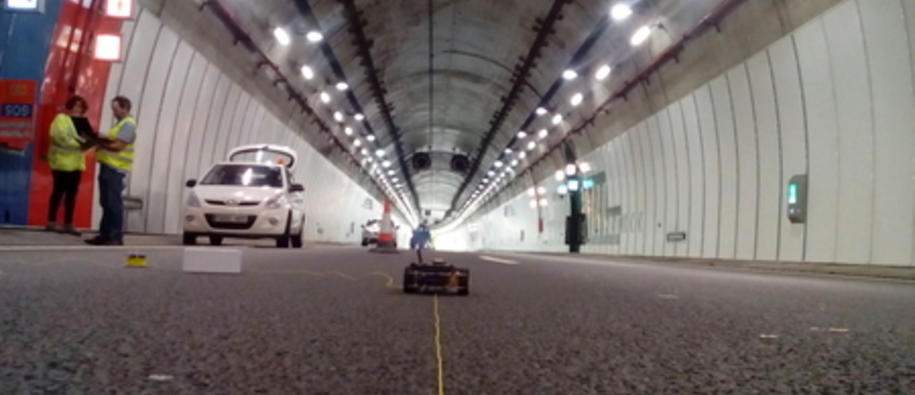The State Highway Network in Spain comprises around 330 tunnels. In Norway, there are more than 1000. If it were not for these passageways through the imposing mountains, transport would be extremely difficult in the Scandinavian countries, whose coastline increases vastly when bays, coves and fjords are taken into account, reaching a total of 25 000 kilometres.
“Norway is a country replete with tunnels. In a European context it is the country with the most tunnels. However, Spain is the number one country in Europe in terms of growth in the number of tunnels over the last few years,” explains Rafael Sánchez, mining engineer at Geocontrol.
With support from Iceland, Liechtenstein and Norway through the Spanish ‘Environmental and climate change related research and technology’ programme, Geocontrol has developed a research project dedicated to the study of energy efficiency in tunnels. Statens Vegvesen, Norway’s Public Roads Administration, has been involved in the project as a partner.
Reducing electricity costs
The ‘Enertun’ project is dedicated to the development of solutions that can improve energy efficiency in tunnels and save electricity costs. This is achieved by reducing unnecessary energy consumption, rationalising working protocols, using alternative energy sources and installing tools that allow for monitoring and prediction of energy consumption.
“To get the project off the ground, we first carried out an analysis of the different types of tunnels in which energy was consumed to determine the most important factors for improved energy efficiency,” says Sánchez. The project has been carried out both in Norway and Spain.
Introducing new technology
The project was not limited to research only. Based on existing technologies, new tools were developed. These include wind gauges, processors, computer programmes and a modern 3D printer that enables efficient – and automated – reading of data. These tools allow for independent measuring of electricity consumption over time. The project also explored alternatives to ventilation and lighting systems commonly used in tunnels.
Lighting constitutes up to 80% of the energy costs in a traditional tunnel. Through the project, the number of spotlights at the entrance of the tunnel has been increased so that the change in lighting from natural to interior – or vice versa – is not so abrupt. That way, the human eye can get used to it more easily, and the increased visibility will enhance the feeling of safety in the tunnel. However, by using sunshades or light screens that gradually reduce natural light, energy costs have been reduced by 15%.
Systems that adjust the intensity of spotlights at the entrance of the tunnels are also available. The tunnel conditions are dependent on geographical location and surrounding terrain at the expense of automated lightning based on time of day and year. A new technology for ventilation makes it possible to adjust the need for air flow depending on the level of traffic passing through the tunnel.
“In existing tunnels, replacement of equipment is fairly costly, but through a series of adjustment, energy savings of between 5% and 10% can be achieved,” says Sánchez.
Spanish-Norwegian cooperation
“The support through the EEA Grants has given us a golden opportunity to begin the innovative project that we have always had in mind, and it has enabled us to collaborate with a world leader in the fields on tunnels, our project partner Statens Vegvesen. We are, of course, learning a great deal from them” explains Agustín Muñoz, Innovation Manager at Geocontrol.
Statens Vegvesen has shared their expertise and best practices from long having worked with energy consumption in Norwegian tunnels.
“We have been given access to research results that have been of great value to us while working with energy efficiency in Norwegian tunnels,” says Harald Buvik from Statens Vegvesen in Norway.
Read more about the EEA Grants to Spain
This story is adapted from an article written by the Norwegian Embassy in Spain and the Spanish Focal Point. It was originally published in the publication '20 years of cooperation and solidarity: Spain 1994-2014'.


